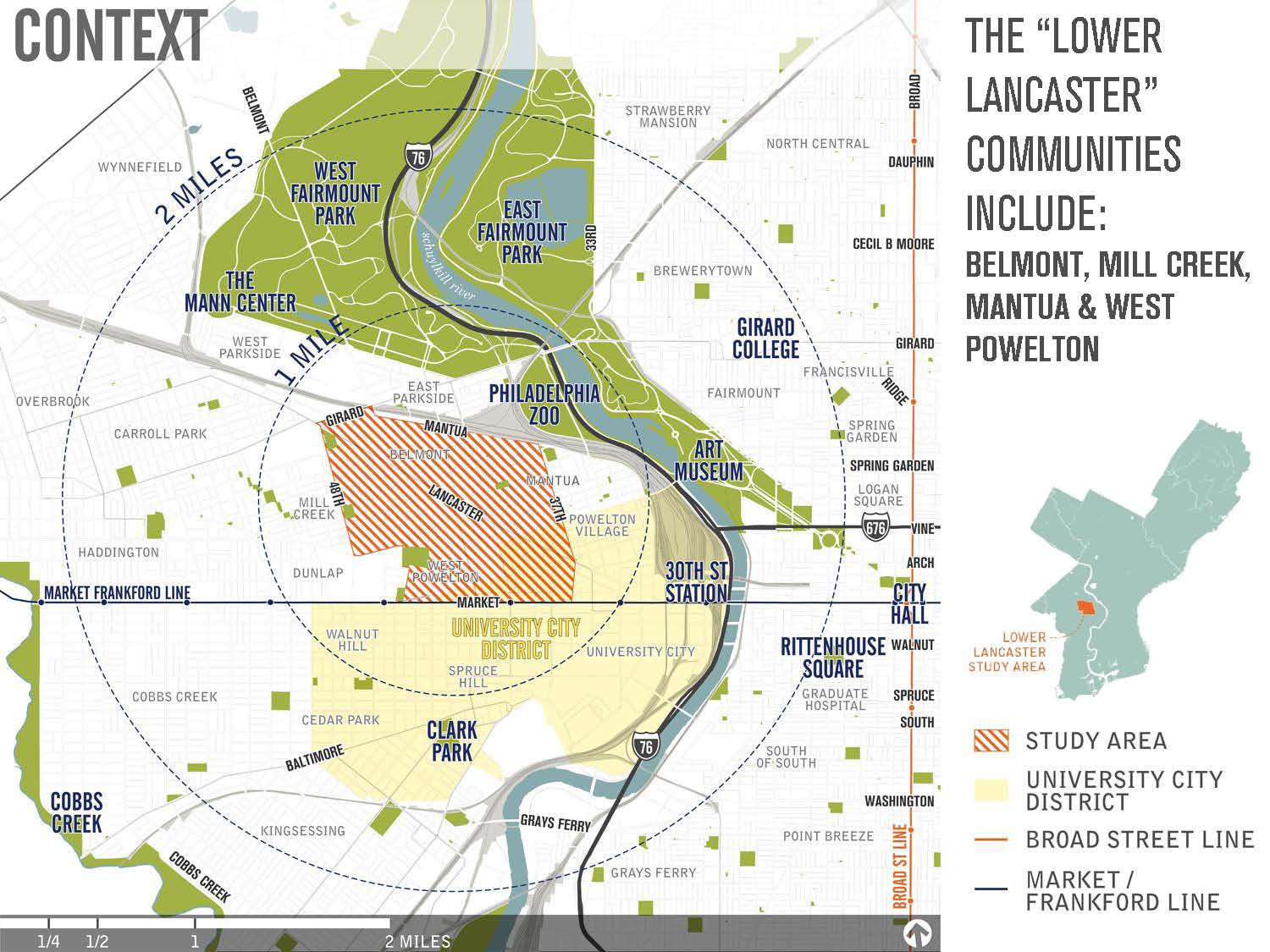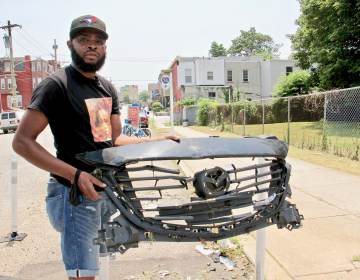A new plan to revitalize West Philadelphia’s Lower Lancaster Avenue

There’s a new plan being designed to spur development along the Lower Lancaster Avenue Commercial Corridor, through parts of the Belmont, Mantua, Mill Creek, Saunders Park, and West Powelton neighborhoods of West Philadelphia.
Make Your Mark, designed through a public input process led by the People’s Emergency Center and the Interface Studio urban planning and design firm, aims to improve residents’ quality of life, provide housing options, improve streets for all kinds of transportation, including walking, revitalize Lancaster Avenue, and create a unique identity for the corridor.
A grant from the Wells Fargo Regional Foundation covered the planning, but the People’s Emergency Center must raise $59 million to fully implement the strategy, Kira Strong, PEC vice president of community and economic development, told planning commissioners at their July meeting.
The commission unanimously accepted the plan, which means that city agencies may consider it when making decisions about the area. The PCPC liked the ideas it contains, but also cautioned PEC to keep expectations realistic, since having a plan is one thing, but having the money to make it real is another.
Video shows the presentation of both the Lower Lancaster Make Your Mark plan and an information-only session about the 52nd Street Economic Development Plan. 52nd Street is first. Make Your Mark starts at 16:07.
“There are a lot of great plans out there right now, but I don’t think it’s fair to get expectations up” without having money, said Commissioner Brian Abernathy, of the city’s commerce department.
The original presentation made to commissioners covered all the ideas, but did not include the cost estimate until Abernathy asked for one.
Commissioner Beth Miller, who is executive director of the Community Design Collaborative, said the funding would have to come from multiple sources. “You have to phase it,” she said of the plan. “You don’t want to raise expectations that this is all going to be done tomorrow. This is a long process. It could take five to seven years for any one of those (plan ideas) to be implemented.”
City Planner Andrew Meloney said that Wells Fargo also offers implementation grants for programming, and the plan was finished early so that PEC could apply for one.
Strong said she hopes to hear from Wells Fargo in November. The grant would be $750,000 over five years, and during that time, “we hope to leverage $20 million through committed and anticipated or hoped for funds,” she said.
PEC is no stranger to this kind of fundraising, Strong said. They did a community plan in the area in 2003, and brought in about $65 million to implement it. “I think in terms of leadership or willingness to move this forward, we’re there,” she said.
Abernathy said the plans-without-money issue remains a pet peeve of his, because not every plan comes with the kind of leadership this one does.
PCPC Chairman Alan Greenberger, who is also the city’s deputy mayor for economic development, suggested PEC begin with a smaller project that can be completed relatively easily to build momentum. He also relayed that he routinely hears from corridor business owners who say the current parking regulations have resulted in commuters parking in front of businesses for the entire day, and suggested fixing that problem would do a lot to improve the business environment.
Meloney summed up some highlights of plan for commissioners:
The large study area runs along Lancaster Avenue, from 37th Street to 48th Street.
To promote safer neighborhoods, the plan calls for improved lighting of streets and public places, and the promotion of crime reporting and mobilization of town watch programs.
“Lancaster Avenue needs a lot more green space,” Meloney said. The plan proposes certain streets, like 40th and Belmont, become greenways. These would tie into greenway goals already set in the West Park District Plan.
The plan also suggests the creation of Lancaster Walk – a series of pocket parks and green spaces along Lancaster Avenue, which has had something of a revival in recent years. It doesn’t have the high vacancy rate of some other nearby streets, but some of the vacancies could become pocket parks, Meloney said. And because Lancaster Avenue runs on a diagonal, its intersections with other streets create small triangles. “Those could be green spaces, or better places to wait for the trolley,” he said.
The plan calls for infill development in other vacancies along the avenue, and encourages rental and multi-family housing there. It calls for transit-oriented development near subway and trolley stops, and suggests exploring live-work spaces.
The corridor has some complicated intersections, with multiple streets, bus and trolley lines. The plan calls for re-doing some of the most dangerous, including 40th and Lancaster. Some solutions may be as simple as changing pavement markings to show pedestrians the best way to navigate across those areas, Meloney said.
The plan also calls for promotion of the corridor’s history and re-use of historic buildings. It says leadership groups along the corridor should strive to coordinate and collaborate more often. It calls for the development of a marketing/branding scheme to promote the area’s unique identity.
Go here to see the plan in its entirety.
Meloney said this plan will be a good base for the planning commission’s launch of the West District Comprehensive Plan in September.
Reach the reporter at kgates@planphilly.com.
WHYY is your source for fact-based, in-depth journalism and information. As a nonprofit organization, we rely on financial support from readers like you. Please give today.




